
|
|
CULTURAL AND WILD PLANTS
Watermelon. Legends, myths, symbolism, description, cultivation, methods of application
Directory / Cultivated and wild plants Content
Watermelon, Citrullus vulgaris. Photos of the plant, basic scientific information, legends, myths, symbolism
Basic scientific information, legends, myths, symbolism Sort by: Watermelon (Citrullus) Family: Cucurbitaceae (Cucurbitaceae) Origin: Africa Area: Currently, watermelons are grown all over the world, but the main producers are China, Turkey, Iran, USA, Egypt, Ukraine. Chemical composition: Watermelons contain a lot of water (about 90%), as well as sugars, acids, flavonoids and carotenoids. Watermelon pulp contains a lot of vitamins C and A, as well as potassium and magnesium. Economic value: Watermelons are widely used in the food industry for the production of juices, nectars, canned food and other products. They are also a popular summer fruit and are used in cooking for salads, desserts and other dishes. In medicine, watermelons are used as a diuretic and for the treatment of certain kidney diseases. Legends, myths, symbolism: In ancient Egypt, watermelon was associated with the goddess Sekhmet, who was depicted with the head of a lioness and was considered the goddess of war and healer. According to one legend, Sekhmet was sent to earth to kill people for their sins. However, after drinking watermelon juice, her anger softened and she stopped her campaign. In Chinese culture, watermelon symbolizes happiness, good luck and longevity. Watermelon vine is also often used in feng shui to create positive energy in the home. In some cultures, watermelon is associated with sexuality and fertility. In medieval Europe, watermelons were often depicted in paintings of naked women, symbolizing fertility and abundance. In addition, watermelon is often associated with summer, relaxation and outdoor activities.
Watermelon, Citrullus vulgaris. Description, illustrations of the plant Watermelon, Citrullus vulgaris Schrad. Botanical description, history of origin, nutritional value, cultivation, use in cooking, medicine, industry
An annual melon plant. The stem is flexible, curly, often creeping, up to 4 m long. The leaves are large, three-five-lobed, strongly dissected. Flowers unisexual, gray-yellow. The fruit is a false berry of spherical or elongated shape, from light green to black-green in color. The pulp is juicy, red, rarely yellow or orange. Seeds are flat, often bordered, white, red or black. Blooms in June-September. The birthplace of watermelon is South Africa, where it is still found in the wild. Watermelon was known as early as 1500 BC. Watermelon seeds have been found in Egyptian tombs. From Egypt, the watermelon culture spread to Arabia, Syria, Persia and other countries. The Arabs attached great importance to the plant. They attributed to him the property "to carry diseases out of the body, if taken constantly before meals." In Europe, watermelon began to be cultivated in the XNUMXth century. Watermelon was brought to the table as an extraordinary delicacy. They did not eat it raw, but soaked it in sugar syrup or prepared molasses with pepper and spices. Watermelon is one of the most light and heat-loving plants and at the same time one of the most undemanding to moisture: the entire growing season can do without a single drop of rain. This is due to the fact that during the season one plant evaporates 1,5-2 tons of moisture, which it receives from the soil due to a powerful, well-developed root system that penetrates to a depth of 40-50 cm (individual roots reach 2,5-3 m) . Watermelon grows best on light fertile soils with a high content of lime, on a layer of virgin land, fallow, after plowing perennial grasses. The best predecessors of the plant are winter crops, corn for green fodder and silage. Sow watermelons at the end of April. Four or five seeds are placed in the wells. In the phase of three or four leaves, the plants are thinned out so that the feeding area is 1-1,5 m2. In the future, the soil is loosened and kept clean from weeds. Often, after fruit setting, the main lashes are pinched. Watermelons are harvested in July-August, in the phase of technical ripeness. Both early and late harvesting affect their quality, especially their sugar content. A ripe watermelon has a dull coating and, when lightly tapped on it with a finger, makes a characteristic dull sound. Watermelon has a high taste and nutritional value. Fruit pulp contains sugars, vitamins B, C, carotene, folic acid, amino acids, fiber, pectins, potassium, magnesium, calcium, iron. Fatty oil was found in the seeds, resembling almond oil in terms of physicochemical properties. Watermelon has long been used in folk medicine. In the Middle Ages, its pulp was used as a refreshing agent. Seeds pounded with milk were taken for uterine bleeding, and watermelon "milk" from seeds pounded in water was used for febrile conditions and as an antihelminthic. Currently, watermelon is recommended as a diuretic for edema associated with various diseases of the cardiovascular system and kidneys. In case of kidney diseases, watermelon juice not only helps to remove fluid from the body, but also nourishes the kidney tissue with easily digestible sugars. Watermelon is included in the diet for diseases of the liver, gallbladder, urinary tract and kidneys, and anemia. Pectins and fiber contained in watermelon pulp improve digestion and help remove cholesterol from the body. Since the pulp of watermelon quickly causes a feeling of satiety, it is recommended for obesity as a low-calorie product. On fasting days, 1,5 kg of watermelon (without peel) are prescribed for five doses. Watermelon is a kind of food-medicine that always helps and never hurts, even in large doses. It is eaten mostly fresh. In addition, juice is prepared from it, as well as jam, candied fruits, jam and watermelon "honey" - nardek. Salted and pickled watermelons have high taste qualities. In the confectionery industry, oil obtained from seeds is used. Watermelon is also used in cosmetics. Toning mask from its juice improves skin color, refreshes it, makes it soft and smooth. Authors: Kretsu L.G., Domashenko L.G., Sokolov M.D.
Watermelon, Citrullus. Classification, synonyms, botanical description, nutritional value, cultivation
Names: Ukrainian kavun; Kirg. carbis; arm. dzmerui; uz. torguz, white kavun; German Wassermelone, goal. watermeloen; dates vandmelone; Swede, vatten melon; English water melon; fr. melon-deau pasteque, citrouille pasteque; nt. cocomero, anguria; Spanish sandia; port, melancia; rum. lubenity; Czech melouny (dyne) vodni; Slovenian and Serb, lubenica, hrk; Polish watermelon, kawon; Japanese suika. This is perhaps the most drought-resistant vegetable and gourd plant. However, watermelon is thermophilic and develops relatively slowly, which partly limits its distribution to the north. If the early varieties of melons annually give a reliable harvest, then the watermelon succeeds here only in the hot summer. Watermelon is consumed fresh, honey is boiled from juice, crusts are used for candied fruits; oil is extracted from the seeds, which is used in the confectionery industry. Citrullus colocynthis (L.) Schrad. distributed wild in northern Africa, Arabia, Palestine, Iran, Balochistan, Afghanistan, Central Asia and the Mediterranean countries of Europe. Colocynt has a bitter taste, contains alkaloids and is not eaten. In some places, its seeds are edible. The Berbers boil oil from the seeds of the colocynth and lubricate the skins for water, so that the camels, who cannot stand this smell, do not spoil them. In Central Asia, colocynth is a weed. However, it is of interest from the point of view of improving cultivated watermelons with its special precocity, drought resistance and fertility. Hybrids of colocynth with edible watermelon have been obtained. Citrullus Naudianus (Sond.) Hock originates from South Africa and is distributed in its most arid regions. In this watermelon, only the roots are eaten. The value of Naudin's watermelon for breeding has not yet been clarified. Citrullus ecirrchosus Cogn. It has bitter, inedible fruits. It is also distributed wild in Africa. For the selection of watermelons, this species does not yet matter. Citrullus vulgaris Schrad. - edible watermelon, which includes all varieties of table and fodder purposes. Racial and varietal characteristics of watermelon are the shape, size and color of the fruit. The shape varies mainly in the following variants: 1) oblate, 2) spherical, 3) ellipsoidal, 4) cylindrical, 5) ovoid, 6) obovate and pear-shaped with the corresponding indices. Varieties vary greatly in size. The main tone of the color of the fruit is green, of varying intensity; rarely fruits are yellowish or bluish. The fruit surface is overwhelmingly smooth; segmented fruits are rare. The pattern of the fetal bark is the most diverse. The thickness of the bark ranges from 0,4 to 2,5 cm. The most thick-barked are C. colocynthoides, followed by the American C. aedulis - Alabama. Tom Watson and others The thickness of the bark determines the place of watermelons in the candied fruit industry: thick-skinned ones are most suitable for candied fruits. The thickness and elasticity of the bark determine the transportability, and sometimes the keeping quality of varieties. Hence a certain advantage of the thick-skinned American varieties over our usually thinner-skinned varieties.
The color of meat in watermelon varies from white and yellow to bright red and crimson. Our consumers are accustomed to brightly colored shapes; American cultivars often have a paler pink coloration. The color of red meat varieties is related to the degree of maturation - hence our habits. But since taste is not connected with color, we should not neglect the more pale-colored varieties. The nature of fruit meat is of three types: 1) dense, coarse-grained and fibrous, 2) tender, melting, fine-grained, 3) loose, fibrous, soft. The juiciness of meat is usually graded (estimated) in three categories: 1) juicy, 2) low-juicy and 3) dry. Seed coloration is reduced to the following types: 1) black (here brown and gray); 2) red (including bright red, dirty brown red, pink and yellowish red); 3) yellow (including yellow-brown, tobacco-grayish and greenish); 4) white (pure white, dirty and yellowish). There are forms with shiny and matte seeds. Seed sizes range from 0,5 to 2 cm long and 0,3 to 1,2 cm wide. The shape of the seeds is of three types: 1) the scar is clearly expressed, the edges of the seeds are thickened; 2) the scar is weakly expressed, the seeds are flat; 3) the seeds are thickened and almost without a scar. In cross section, the seed has the shape of a lentil. Varieties of watermelons vary quite sharply in terms of the content of seeds in them. Old varieties are usually more seeded, modern ones are selected for low seed. Seed yields range from 0,5 to 2,5 q/ha. Of the biological characteristics, precocity (vegetation period) and self-pollination are also very important. Good keeping quality is characteristic of thick-skinned watermelons. Author: Ipatiev A.N.
Watermelon, Citrullus lanatus. Methods of application, origin of the plant, range, botanical description, cultivation
One of the most common crops in the arid regions of the tropics and subtropics is watermelon (Citrullus lanatus Mansf.). The harmonious combination of sugars, mineral salts and vitamins gives the pulp of watermelon a unique taste and aroma. It is especially nice to eat a cool watermelon on a hot afternoon. From the pulp of watermelon, watermelon honey is prepared - bekmez, and the peel of the fruit is used to make candied fruits. Great medicinal value of the fruits of watermelon. Kidney diseases are treated with a special diet, preventing the formation of stones in them. The use of watermelon in food is useful for obesity. The introduction of fodder watermelon into the diet of animals increases their milk productivity. Small fruits are salted for future use, and some varieties can be stored up to 5-6 months after harvest. The world production of watermelons in 1989 was more than 28 million tons with an average yield of 14,7 tons/ha, and the total area is close to 2 million hectares. Half of the world production of watermelons is accounted for by Turkey (5,0 million tons), China (6,1) and Ukraine (5,3 million tons). Due to the fact that watermelon fruits ripen after being harvested and withstand 10-15 days of transportation by sea and river transport, they are exported from subtropical and tropical countries. Thus, Turkey exports to European countries 2-3 million tons annually, Egypt exports up to 0,5 million tons, Tunisia and Libya export 100-150 thousand tons annually to Western Europe. The USA, Canada, Scandinavian and Central European countries. The center of origin of the watermelon is the Namib Desert and the Kalahari semi-desert in South Africa, where wild watermelon thickets can still be found along the wadi valleys. Genus Watermelon (Citrullus) - small in volume, includes 3 species. Woolly watermelon (Citrullus lanatus) is represented by wild, semi-cultivated and cultivated forms. The subspecies lanatus is divided into 3 varieties. The most interesting among them is fodder watermelon, candied fruit (var. citroides), which is widely distributed as a field weed plant in table watermelon crops. This species is suitable for growing in dry areas. Subspecies vulgaris (Mansf.) Fursa combines table watermelons and semi-cultivated forms from Sudan. Dessert table watermelon (var. vulgaris Fursa). In his culture, great successes are associated with the introduction of polyploid forms. The Japanese geneticist and breeder Kihara bred and introduced into production a triploid watermelon, seedless, with a heterotic effect, high sugar content and at the same time with excellent keeping quality and transportability. But you need to know that triploids require pollination and they are sown in the same area together with diploid varieties in a ratio of 4:1, 5:1. With mechanized sowing with a six-row seeder, the central row is sown with a diploid variety. Colocynth (Citrullus colocynthis) - this species of watermelon in the wild lives in the deserts of Africa, Arabia, Iran, Turkmenistan, Afghanistan, the Indian Thar Desert and Australia. Perennial plant with poisonous fruits. Watermelon is an annual plant with a creeping, strongly branched, 5-sided stem up to 5 m long, pubescent with hard hairs. The leaves are rigidly pubescent, deeply dissected into 3 pinnately incised lobes, gray-green, large. Flowers grey-yellow, unisexual; women's are larger than men's. The fruits are mostly spherical, but there are cylindrical and oval shapes, 10-75 cm long, weighing up to 8-12 kg. The color of the fruits is often variegated, but sometimes they are painted uniformly in white, green or almost black. The pulp of the placenta is red, pink, sometimes yellow or white, at the beginning of ripening it is crispy, juicy, and later undergoes maceration. The seeds are flat, ovoid, white, yellow, red, brown, black and marbled. Weight of 1000 seeds up to 100 g. Seeds remain viable for up to 5-8 years.
Watermelon belongs to creeping vines: this is due to the severity of the fruit, which can grow up to 20-25 kg only on creeping lashes. The biology of the antennae of a watermelon is peculiar, it is adapted to cling to lumps of soil. The shape of the fruit in wild watermelon is mostly spherical, allowing the mature small fruits to roll. Ripe fruits, driven by a storm stream or wind, roll to new places, seeding them. Cracked fruits easily fall apart during movement, the juice moistens the soil, the mucus fixes the seed, and it germinates in a new place. Most of the fruits of wild watermelon in the Kalahari semi-desert are characterized by complete maceration (destruction) of placentas and their spreading so that there is a lot of moisture, it is enough for seed germination. The sticky mucus from the placenta anchors the seeds well in the soil. In the tropics during the dry season, when watered during sowing and vegetative growth, it produces high quality fruits, during the wet season it is often affected by diseases and the quality deteriorates. Watermelons can successfully grow and produce crops at daytime temperatures up to 45-50 °C and night temperatures up to 30 °C. A special place in the conditions of the tropics and subtropics is occupied by measures to combat pests and diseases. First of all, they protect crops and seedlings from damage by birds. Watermelon gives high yields on light fertile brown, chestnut and black earth soils. It is better to grow it on virgin and fallow lands. In crop rotation, it goes through a layer of perennial grasses, well-fertilized grain crops. For sowing, it is better to take seeds that have been stored for 3-4 years. Seeds from the previous year's harvest must be warmed up before sowing at a temperature of 50 ° C for 2 hours. Against fungal diseases, seeds are treated with TMTD (5 g per 1 kg of seeds). To speed up the emergence of seedlings, they are germinated by immersing them in hot water (4-60 ° C) for 65 minutes and kept at a temperature of 3 ° C for 30 days on a wet litter with shelter. The sowing rate of small seeds is 2-3 kg, large seeds - up to 4-5 kg per 1 ha. Various sowing schemes - 1,4x1,4; 2,1x1,4; 2,1x2,1; 2,8x2,1 m, in the arid zones of tropical deserts, large feeding areas are also used. Shoots are thinned out, leaving 1-2 best plants in the nest. The aisles are regularly loosened. The fruits are harvested in 2-3 terms as they ripen. The maturity of fruits in the field is determined by the drying of the tendril at the stalk, a special luster, a dull sound when snapping fingers or crackling when they are lightly squeezed. Authors: Baranov V.D., Ustimenko G.V.
Edible watermelon, Citrullus lanatus. Botanical description, habitat and habitats, chemical composition, use in medicine and industry
An annual plant with a creeping round-pentahedral stem, Cucurbitaceae family, leaves are three-lobed, deeply dissected. Flowers unisexual, yellow. The fruit is a spherical false berry, reaching 15-20 kg. Range and habitats. Watermelon is native to South Africa (Botswana, Lesotho, Namibia, South Africa: Cape Province, Free State, Gauteng, KwaZulu-Natal, Limpopo, Mpumalanga, Northwest Province, North Cape Province). Widely cultivated in many regions of the world. Chemical composition. Watermelon fruit pulp contains from 5,5 to 13% of easily digestible sugars (glucose, fructose and sucrose). By the time of ripening, glucose and fructose predominate, sucrose accumulates during the storage of watermelon. The pulp contains pectins - 0,68%, proteins - 0,7%; calcium - 14 mg/% (mg per 100 g), magnesium - 224 mg/%, sodium - 16 mg/%, potassium - 64 mg/%, phosphorus - 7 mg/%, iron in organic form - 1 mg/% ; vitamins - thiamine, riboflavin, niacin, folic acid, carotene - 0,1-0,7 mg /%, ascorbic acid - 0,7-20 mg /%, alkaline substances. 100 grams of the edible part of the fruit contains 38 kilocalories. Watermelon seeds contain up to 25% fatty oil. Watermelon seed oil contains linoleic, linolenic and palmitic acids, in terms of physical and chemical properties it is similar to almond oil and can replace it, according to taste - to olive oil. Application in medicine. The fruits of mature watermelon (pulp, rind) and seeds are used as medicinal raw materials. Watermelon has a strong diuretic, choleretic, anti-inflammatory, antipyretic, laxative and tonic properties. Normalizes metabolic processes, enhances intestinal motility. The use of watermelon in medicine is due to the high content of water, alkaline substances, iron, relatively low calorie content with a large mass and diuretic properties. Watermelon is used fresh up to 2-2,5 kg per day for nephrolithiasis, cystitis, nephritis and pyelonephritis, occurring without fluid retention in the body. Watermelon does not cause irritation of the kidneys and urinary tract, the diuretic effect is physiological. The content of alkaline compounds regulates the acid-base balance, as a result of which watermelon is used for acidosis of various origins. In nephrolithiasis, watermelon is prescribed for urate, calcium oxalate and cystine urolithiasis with salt precipitation in acidic urine. An increase in the alkalinity of urine under the influence of substances contained in watermelon converts salts into a more soluble state, and diuresis forced by watermelon contributes to the removal of salts. Concentration of urine occurs to a greater extent at night, so the water load with the help of watermelon is prescribed evenly throughout the day, including at night, despite the inconvenience associated with disturbed night sleep. With phosphate urolithiasis with stone formation in alkaline urine, watermelon is not used.
The content of easily digestible sugars and water in watermelon pulp determines the use of watermelon in chronic and acute liver diseases, endogenous and exogenous intoxications, industrial and drug intoxications. Watermelon is also used for obesity and the need for fasting as indicated during treatment. A significant volume of watermelon pulp, which simulates the saturation of the body, is combined with a relatively low calorie content. Pectins and a small amount of fiber in watermelon pulp help to optimize the intestinal microflora and do not cause flatulence. The possibility of consuming large quantities of watermelon pulp, containing easily digestible organic iron, determines the use of watermelon for various kinds of anemia, during pregnancy, during lactation, and in conditions associated with iron deficiency. You need to take one kilogram of watermelon pulp to get one gram of iron. In folk medicine, watermelon seeds ground in a mortar 1:10 are used as an antihelminthic. The antihelminthic effect of seeds is confirmed by experimental studies. The people use dry and fresh watermelon peels in the form of a decoction 1:10 half a glass 3-4 times a day as a diuretic. The diuretic properties of such a decoction have also been confirmed in animals. Other uses. Popular food plant. Authors: Turova A.D., Sapozhnikova E.N.
Watermelon. reference Information
In the Middle lane, it is better to grow watermelons in a greenhouse, because in the open field the crop is completely dependent on the weather, most often it turns out to be very small. In addition, the fruits lose in sweetness to greenhouse ones. Varieties. At first, it is better to take all early varieties intended for cultivation in the Middle lane in open ground. Sugar Baby is still the best variety in terms of the totality of indicators. Soil preparation. In the greenhouse, watermelon every year comes to the place of the tomatoes with sweet peppers that bore fruit last year in the process of the simplest fruit change, this provides for the presence of two greenhouses. If, however, the fruiting cycle is improved from a two-year to a three-year one, then it is better to plant a watermelon after a set of green ones, which are grown in the third greenhouse in the general cycle "tomatoes with peppers - green watermelons with melons ..." Thus, the question of choosing a predecessor is removed by itself. Compost / humus is added both under greens and watermelons, but less than twice as much as under tomatoes or cucumbers. After all, it is understandable: a watermelon lash grows only 1-2 ovaries, and even those slowly. A small number of improving additives to choose from: ash, a solution of humates with trace elements... For watermelon, the main thing is warmth. In order for his lash to grow well, the soil must be deeply warmed up. This can be achieved in various ways, for example, by laying cut squares of galvanized iron on its surface in advance in April. They should be laid with gaps in which young seedlings at the age of 1-2 weeks will be planted in cups. The cups are quite voluminous, about 1 liter, with large drainage holes for the passage of the roots. In the greenhouse, you can not dig them in, but simply put them on the surface of the soil, since here they are unlikely to be knocked over. So our bushes will be on a hill and they will be warmer at first. Iron heats up beautifully in the sun and makes the soil warmer day by day. By the end of May, it can be completely removed. Planting seedlings is carried out in the first half of May, if the weather forecast does not promise frosts. Watermelon seedlings can withstand a weak frost in a polycarbonate greenhouse (its walls have an air gap), if all the blown slots are covered with adhesive tape. If it suddenly happens that the plants die from an unforeseen night frost, calmly re-sow: sow new seeds in the same pots, taking them back into the house. Cups with seedlings are placed in a row at a distance of 40-50 cm from each other, so that the lashes are then let up to the ceiling along the twine. Depending on the width of the greenhouse on the "watermelon side", the plants are planted in one or two rows. Care. At night, the doors of the greenhouse are closed, and they are opened during the day, although watermelon tolerates overheating well. It is very important to observe a moderate water regime. Watermelon does not like frequent watering, is afraid of excess water, can easily get sick and die. The young growing watermelons themselves burst immature from heavy watering, after which they rot. This plant has a very high sucking power of the roots, watermelon behaves like a truly desert plant, it is able to suck water out of barely moist deep soil. And he will basically have enough moisture from the space of the earth surrounding the greenhouse, he will get it. Considering that the greenhouse has humid air and condensation runs down the inner walls in the morning, you most likely won't need to water at all. In the Middle lane, where it still rains occasionally in summer, and the roof of the greenhouse serves as a drain of water, ensuring the wetting of the earth in depth, this crop can not be watered at all in an ordinary summer. Unless it's going to be a very dry summer. Practice shows that it is better to leave one ovary on each plant. You should not rush with the final choice, since the watermelon often resets the growth of the ovary that started. It is better at first to let him grow 2-3 ovaries, and only after a while, when it will be clear which of them is the most serious, cut off the rest with pruners. When the ovaries have formed and you have chosen the most actively growing for each plant, the side shoots can be pinched so that they do not create a thickening if you have time. If it is sorely lacking for the entire greenhouse economy, then you can not pinch it. When the main lash of each plant reaches the ceiling, pinch it too. The plant now has enough leaves to fill the ovary. Harvesting. It's a shame to shoot an unripe watermelon. To be sure, you have to shoot them later than melons. With melons, everything is clear, their ripeness is easily recognizable by color, and it is better to keep the watermelon on the whip until it dries out closer to September. Author: Trannua P.F.
Watermelon crackles. Interesting plant facts
From the time of Tsar Alexei Mikhailovich to the present day, melon growers have been tormented by one unresolved question: how to make watermelons transportable? How to transport them without loss? Tsar Alexei Mikhailovich had a great sweet tooth. The most sugary watermelons were brought to him, from Astrakhan. In carts, horse transport. So that the fruits did not crack on the way, they hung them on belts. Moreover, pillows were attached to each watermelon so that they would not beat each other. Then they began to carry on carts with springs. Melon growers assure that the springs themselves appeared from the need to transport whimsical watermelons. They checked: one mile of driving without springs does more harm to them than a thousand miles with springs. Now we transport smoothly, on rails, but ... loading, unloading, transfer. From wagon to wagon, to car, from car, to shop... Sometimes a third part will be beaten. What to do? Breed unbreakable varieties? The thought is correct. But here's what history says. Once upon a time, two varieties were famous on the Volga - Rastun and Treskun. Rastun grew rapidly and endured transportation well. It was being prepared for sale. And they raised Treskun for themselves. This one shattered at the slightest jolt. It could only be eaten on the spot. But he was three times, ten times more tender, tastier, sweeter than Rastun. For a long time they fought over the problem: how to determine the strength of a watermelon? How to know in advance whether the goods will reach the buyer or not? They put a watermelon under the press. If the bark bursts, it means that it is not suitable for a long journey. Then they developed another way. Cut out a strip of watermelon bark. Slice. Narrow and long. They tried to bend it into a ring. The steeper the arc, the stronger the bark. The bark itself was dismantled in layers. The strength is given to it by a layer of mechanical tissue. Springiness is that colorless layer that we do not gnaw and throw away with the bark in the trash. Had to reinforce these layers? Tried. Still cracking watermelon. It's not just about the core. Also in the pulp and much more. In general, there is no such variety so far that it does not crack. Nature has programmed the striped balls for just the opposite. The watermelon may roll for a while, but should crack at the finish line. Otherwise, how will the seeds spill out on wild melons? So the program is being executed ... Breeders will have to tinker a lot more. The watermelon business is new. In Russia, large melons arose only a hundred years ago in the 80s, when a railway was built from Moscow to Saratov and Tsaritsyn. That's when the watermelon era began. The center of the newly appeared empire was the village of Bykovo on the Volga, 80 versts below Kamyshin (there is still a watermelon center there). The scale of growing watermelons among Bykovsky villagers was amazing. In one autumn day they loaded a million heavy fruits! Technique developed excellent. Made it without any chemicals. There were, of course, their secrets. The main one is in the seeds. They were not taken from any fruit. Of the special ones, which were called watermelons. Cut the watermelon in half. Seeds were selected only from the half that is closer to the "tail", to the stalk. Of course, any secret is not eternal. The neighbors adopted the experience of the Bykovites. And soon the banks of the Volga turned into a huge stadium, where millions of green balls are scattered. However, the watermelon epic ended rather badly. So many fruits were prepared that they could not be transported. Piles of fruit piled up at the stations. Countless hordes of watermelons rotted under the Volga sun. Beautiful, healing, but, alas, inaccessible to the consumer. However, there was still a way out of the difficult situation. Thanks to the Free Economic Society. It accurately foresaw the watermelon crisis and back in 1810 announced a competition for the extraction of sugar from watermelon juice. No one then overcame this task. But they made honey. Dark, thick nardek. They kneaded dough on it and baked gingerbread cookies. Connoisseurs say that the best gingerbread in the world can not be. After the revolution, Moscow co-operators became interested in the people's deputies. They bought watermelon honey in wagonloads. Sent abroad. German firms from the city of Hamburg bought especially a lot of it. They also baked gingerbread. Having heard about Bykovsky watermelons, the Americans equipped a special expedition to the Volga. Wandered through the melons. Tasted. Selected the best varieties. Collected seeds. Then they divorced them in the States. Russian watermelons differed from their own, home-grown, with unprecedented keeping quality. Could be kept until Christmas. That is why they are called "Christmas". And the Don Cossacks brought out an even more mature variety. Pudova, Azovsky. With pale yellow flesh and blue seeds. It could be stored all winter. And although the pulp was not very sweet, yet the variety was not worth the price. They made excellent candied fruits from it, and the plant could work all year round without interruption. In Russia, they were not particularly fond of sizes (the larger, the more watery). There was such a not very large watermelon - the Favorite of the Pyatigorsk farm. The owner of the farm D. Lesevitsky, well-known throughout the country, brought him out. The Darling had fiery red flesh. It ripened so early that it was suitable even for Eastern Siberia. He kept up well there, despite the short summer. Since then, many varieties have changed and gone into oblivion. Favorite is alive! The most difficult thing in the watermelon business has always been considered sowing. Fatty seeds attracted a lot of birds. In the spring, melon is like a bird market. Pigeons, crows and poultry hustle. Mice too, of course. Those owners who were stingy and spared seeds punished themselves. Quadrupeds and birds ate everything clean. It was necessary to make a new crop. But time has already passed. The smarter melon growers paid tribute to the beast. Not one seed was thrown into the hole, not two or three, but twenty, or even a whole handful. In the end, both sides won. In the United States, earth hares are especially annoying to this day. They tried to sprinkle the seeds with mothballs to beat off the watermelon smell. It helped, but only on condition that the crops were made cleanly and the sowers left no traces. If you have lost at least a few grains, everything is lost. Hares are no longer afraid of naphthalene. On the contrary, they strive for the smell like maniacs. Watermelons attract even such inveterate anti-vegetarians as wolves. We saw a wolf, which carefully visited the melons for sweets. "He will poke his muzzle and roll to the log. He threw it off a cliff, another one rolled. In the morning I found some skins," V. Peskov testified. Thus, the attitude of the wolf to watermelons is quite human. Gray likes, just like us, juicy, sweet pulp. Another thing is a hare hare. He has the opposite concept of watermelons. You can’t tempt a hare with pulp. Give him a crust. It is the one that both we and the wolves throw away. Oblique gnaws a striped ball from the outside, greens to a white layer. Then they drop it and move on to the next one. A white spot on a green background can be seen from afar. It catches the eye of rooks and gray crows. The place is vulnerable, it is easy to gouge it with a beak. The feathered do just that. They make a hole. Get to the pulp. Then they are thrown, and the fruit rots under the generous sun. If there were no hares, the crows would not have dared to take independent actions. Shoot oblique? No you can not. Summer. And the law at this time is on their side. Bakhchevodov was not embarrassed by the difficult situation. They launch an ordinary kite into the sky. And they themselves walk across the field with a short-legged dog. The dog scares away the rabbits. They see a kite in the sky. And he probably appears to them as a soaring predator, because the obliques ask such a streka that they instantly release the melon. Then they are not seen for half a day. Only in the afternoon, in the evening, they appear. Then the melon grower launches the snake again and goes to the second round. Another difficulty with watermelons is picking up the ground. Virgin land has always been considered the most suitable for them. When the virgin lands diminished, the watermelon craftsmen became alarmed. It came to curiosities. In the Poltava province, virgin lands began to be sold at retail, in buckets and in bulk - 50 kopecks per cart! They were transported for tens of kilometers, poured into holes in the field. And at the beginning of the century, even a message in the press flashed: from now on there are no large melons in the Poltava region! What to do? The population has grown, and the free space has become less. A watermelon lash requires space ... Well, if it was so bad with the land in the Poltava region, then what can we say about the north. There are very few good places. Especially on the rocky island of Valaam. At one time, the monks tried to grow their own, Valaam watermelons. They bred the Monastyrsky round variety, dark-skinned to blackness. At first everything went smoothly. Then the fruits began to shrink. And the taste has changed. Hieromonk Anastassy, the chief gardener, turned to the magazine: "What is to be done?" - "Get fresh sod land!" - was the answer. "But there are only rocks on Valaam..." - "Well, go to the mainland and bring the land on a steamboat," the magazine retorted. Perhaps the Kashmiris got out of the land shortage in the most original way. They break melons not among the sandy steppe, but among the water. We chose for this purpose the most beautiful lake of the Kashmir Valley - Zerinagur, one and a half kilometers long. Poplar poles are driven into the bottom, long as logs. Rows, ranks, steps in five rows from rows. Then tenacious aquatic grasses are dragged out of the water and the poles are fastened like a rope. It turns out something like a hammock. More aquatic herbs are piled on the hammock. They quickly decompose, and the ridge is ready. Watermelons grow well on it. The crop is harvested by boats. And finally, I foresee the question: how to evaluate the ripeness of a watermelon? How to choose red, juicy, sweet? To not raw and not overripe? Experts approach this issue cautiously. Restrained. It is usually advised to evaluate a future purchase from three sides. First, is the "tail" dry? If dry, the watermelon is ready. More meticulous recommend paying attention to whether it is twisted? It is better to take not twisted. Second rule: click on the peel with your fingernail. If the sound is loud - take it. If you're deaf, wait. The third rule: look at the bright spot (on the side that was towards the ground). If it is shiny, smooth - bad. If it's bright yellow, it's good. If it's rough, good. If it's barely whitish, it's bad. But all these rules still do not give a guarantee. You can click and get a ringing answer, but inside is emptiness! Overripe! Some try to squeeze the watermelon. If it crackles, it is considered ripe. But it's like squeezing! If there is strength, anyone will crack! Even the most unworthy one. Perhaps the commentator of one of the old agricultural magazines spoke most correctly. "Finding out whether a watermelon has sung or not is, pardon the comparison, as difficult as distinguishing a young gander from a goose. An experienced owner will not be mistaken, but ask by what signs he recognized this - he will not be able to say! Intuition!" Author: Smirnov A.
Watermelon. Useful information
Watermelon is a plant of the Kalahari Desert. Watermelons come from the desert of South Africa. Watermelon is a creeping vine that clings to the soil with its antennae. Watermelon is a drought-resistant plant, but it needs water to bear fruit abundantly. “In those years,” writes South Africa traveler D. Livingston, “when it rains more than usual, the country’s spaces are literally covered with these watermelons ... Then animals of various breeds and names enjoy them to their heart’s content. The elephant, the true king of the forests, then revels in its juice as well as various types of rhinoceros. With the same greed they eat watermelons and different breeds of antelopes, lions, hyenas, jackals and mice; they all know this beneficent gift for everyone. When animals eat watermelon, seeds fall and abundant juice flows to the ground, moistening it. The sweet juice sticks the seeds to the moist soil, and they germinate. Try tossing wet watermelon seeds onto paper. When they dry out, it will be difficult for you to tear them away from her. For the germination of watermelon seeds, a lot of moisture is needed, which is stored in large fruits. In southern Tajikistan, watermelon seeds are kept in jugs of water for a whole month and sown by the end of the rainy season. Under this condition, watermelons sprout well and develop rapidly. Desert plant - watermelon during seed germination needs abundant moisture. In the Kalahari Desert, during the rainy season, there are heavy downpours that flood the lowlands. At this time, strong winds and water currents roll watermelons over long distances, driving them into deepenings of the soil, lowlands, and gorges. Entire warehouses of fruits are formed, where they rot. In conditions of high humidity, the seeds that remain until the rainy season germinate, forming whole thickets. When rolling, watermelons bouncing like balls on uneven ground break. Seeds spill out and, moistened by the flowing juice, also germinate. The wild watermelon of the Kalahari desert is the size of a tennis ball and weighs about 250 grams. Cultural watermelons reach 10 and even 16 kilograms. In the south of Russia, watermelons have spread from Astrakhan, the end of the waterway from the eastern and southern countries. Tsar Alexei Mikhailovich ordered "watermelon craftsmen to make watermelon gardens" from Astrakhan to Moscow. By this time, there were attempts to grow watermelons in Moscow, in greenhouses with mica frames. In the description of the city of Kursk, dating back to the XNUMXth century, it was mentioned: "And in the fields there is a bakch (a kind of vegetable garden), where there are melons and watermelons of an excellent taste." Watermelons are everyone's favorite fruits growing in Ukraine, the Volga region, and Central Asia. Endless melons are covered with beautiful carved leaves, among which green and striped balls - watermelons ripen. Now watermelons and melons are also becoming northern plants. They began to be cultivated on the collective farms of the Luga region near Leningrad. As we said earlier, in the north, melons and watermelons grow well and ripen grafted on a pumpkin. Author: Verzilin N.
Watermelon. Application in cosmetology
Many women, especially in the rural areas of the south, used this berry, the largest in nature, in the old days to prepare nourishing and vitamin masks. The pulp of watermelon contains a lot of soluble sugars - fructose, sucrose, glucose, maltose, pectin, ascorbic and folic acids, carotenoids and amino acids that are very useful and necessary for the body, salts of calcium, potassium, magnesium, iron, etc. Due to the high content folic acid and some other organic substances, watermelon juice is an excellent tonic and hygienic remedy. Masks are prepared as follows. The pulp of a ripe watermelon is squeezed into a glass dish and used immediately, since the juice may sour during storage. Before applying the mask, they thoroughly wash themselves with soft water and, if possible, make a steam bath of the face: covering the head with a towel, holding for ten minutes: the face over a basin of boiling water. If the skin is oily or heavily soiled, it is good to wipe it with a table salt solution (half a teaspoon per glass of water). After two or three minutes, the salt solution is washed off and the face and neck are dried with a soft towel. To prepare the mask, take 5-6 layers of gauze or a thin layer of cotton wool, which are moistened with watermelon juice and applied for 15-20 minutes on the face and neck. After removing the mask, wash your face with warm water and dry with a towel, not wiping, but blotting the skin. In conclusion, the face is lubricated with a commonly used nourishing cream, necessarily prepared with natural fat. Watermelon mask is a wonderful tonic. Prevents flabbiness of dry and oily skin, improves color, refreshes, makes soft and smooth. There is a simpler and faster, so-called "field" method of preparing a watermelon mask. After washing with warm water, a gruel from the pulp of watermelon is applied, lying down, in a thin layer on the face and neck, covered with a towel on top and left for 10-15 minutes. After washing after the mask, dry the skin and lubricate with a nourishing cream. Watermelon juice is washed all autumn. Moisten the face with juice several times, after which they wash with cold water. If possible, you can do a steam bath first over hot water and then over boiling watermelon juice. In Zaporozhye, Mykolaiv and Kherson regions, bekmez is boiled from watermelon juice - sweet molasses. Women do not miss the opportunity to steam their faces over a bowl of boiling juice. Author: Reva M.L.
Watermelon, Citrullus vulgaris. Recipes for use in traditional medicine and cosmetology
Ethnoscience:
Cosmetology:
Attention! Before use, consult with a specialist!
Watermelon, Citrullus vulgaris. Tips for growing, harvesting and storing
Watermelon is one of the most popular and loved fruits of the summer season. Tips for growing it, harvesting and storing watermelons: Cultivation:
Preparation and storage:
▪ Antillean cucumber (watermelon cucumber, anguria) ▪ Carambola (kamrak) and bilimbi ▪ Play the game "Guess the plant from the picture"
Energy from space for Starship
08.05.2024 New method for creating powerful batteries
08.05.2024 Alcohol content of warm beer
07.05.2024
▪ Nanosensor determines the freshness of meat ▪ Transcend SSD2,5N 250" NAS Drives ▪ Wi-Fi bandwidth increased by 8 times ▪ Ventilator to help you breathe
▪ site section Infrared technology. Article selection ▪ article by Tommaso Campanella. Famous aphorisms ▪ article Why did announcers wear green lipstick in the early days of television? Detailed answer ▪ article Fiberglass... YAGI! Encyclopedia of radio electronics and electrical engineering ▪ article Guessing a three-digit number. Focus Secret
Home page | Library | Articles | Website map | Site Reviews www.diagram.com.ua |






 Arabic
Arabic Bengali
Bengali Chinese
Chinese English
English French
French German
German Hebrew
Hebrew Hindi
Hindi Italian
Italian Japanese
Japanese Korean
Korean Malay
Malay Polish
Polish Portuguese
Portuguese Spanish
Spanish Turkish
Turkish Ukrainian
Ukrainian Vietnamese
Vietnamese


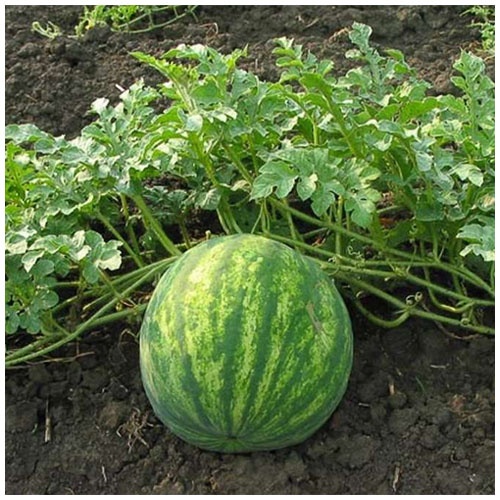
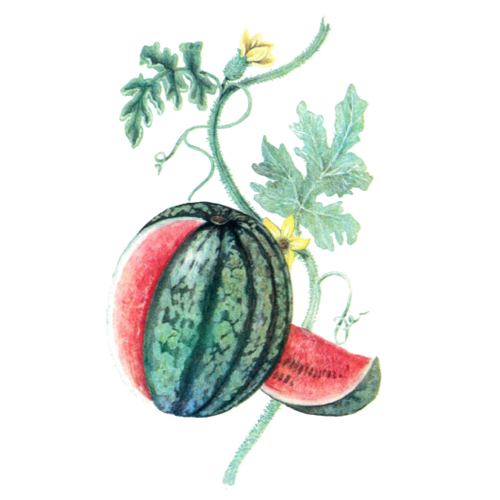
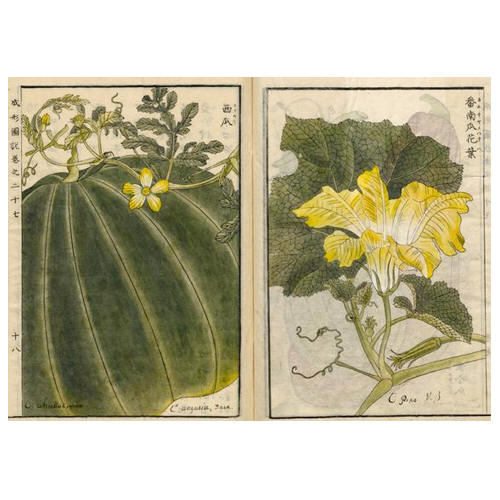
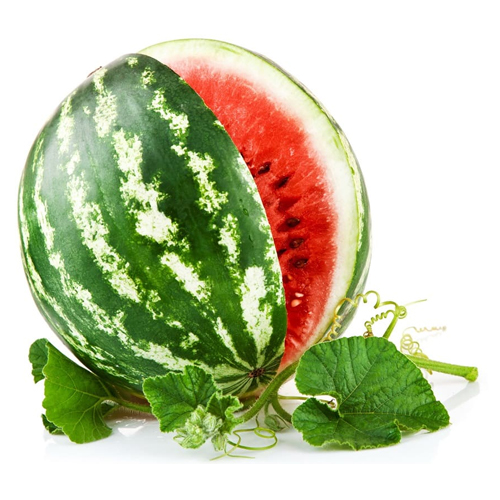
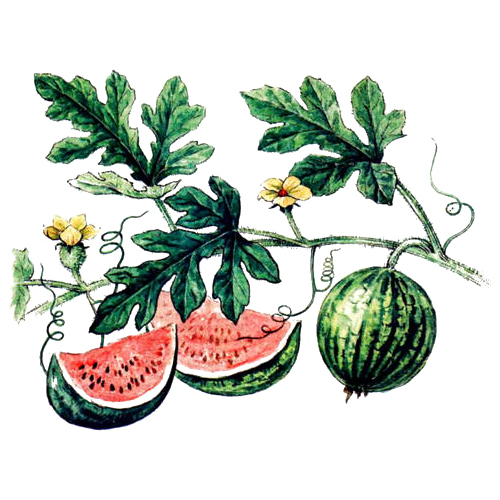

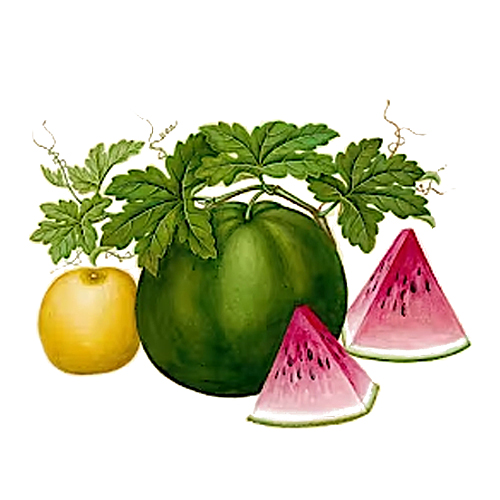
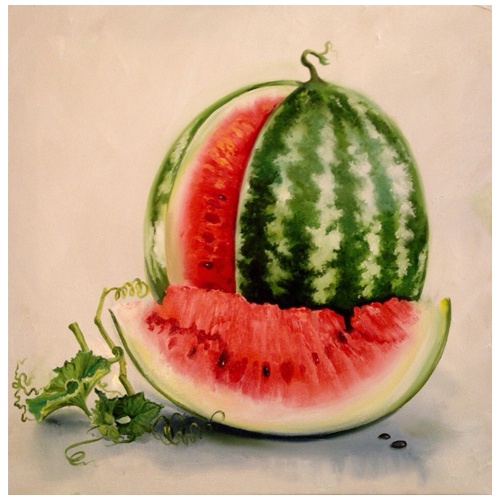


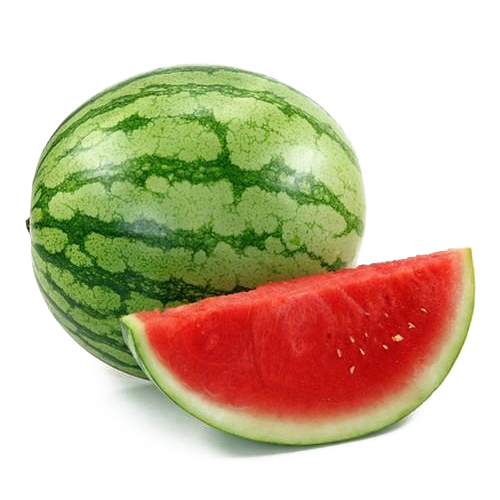

 See other articles Section
See other articles Section 